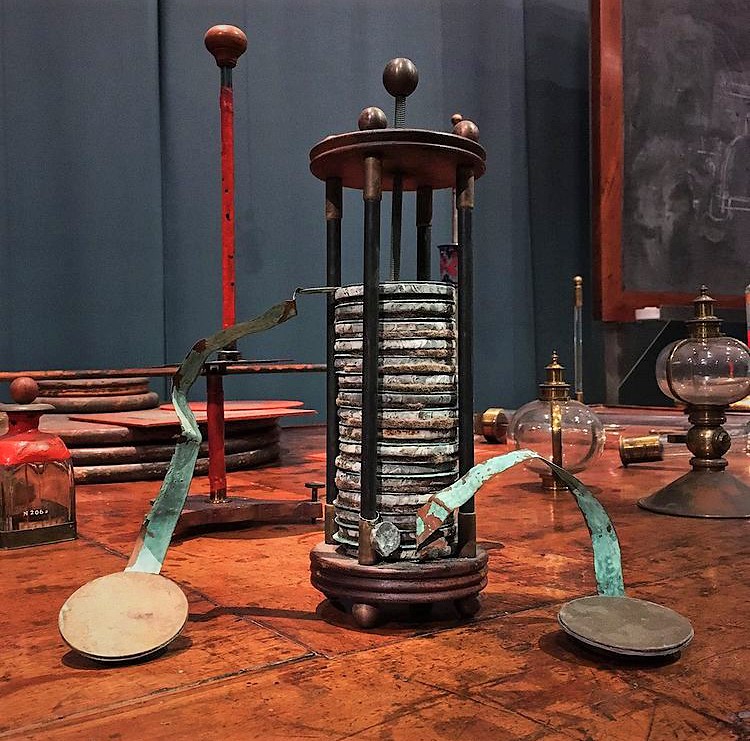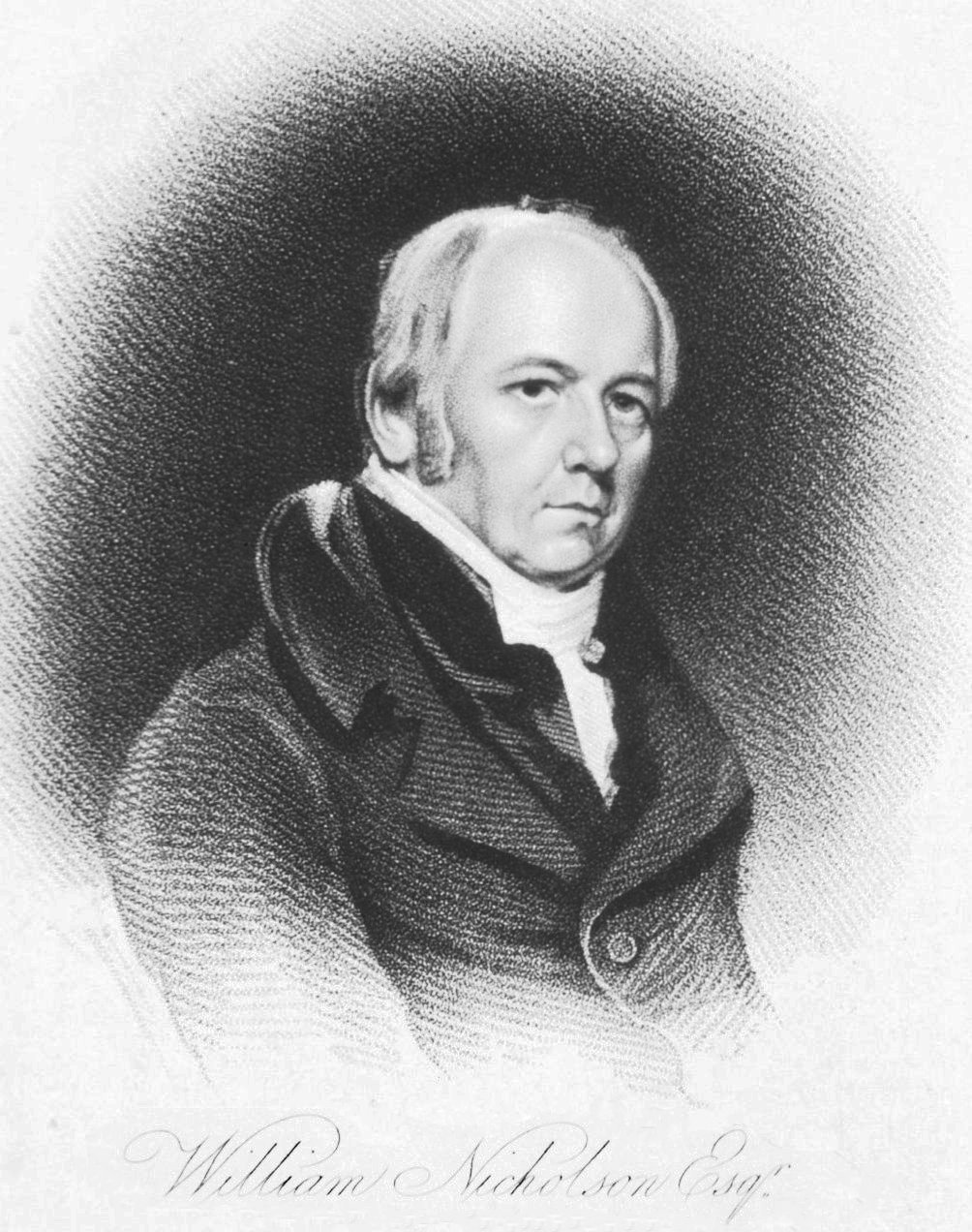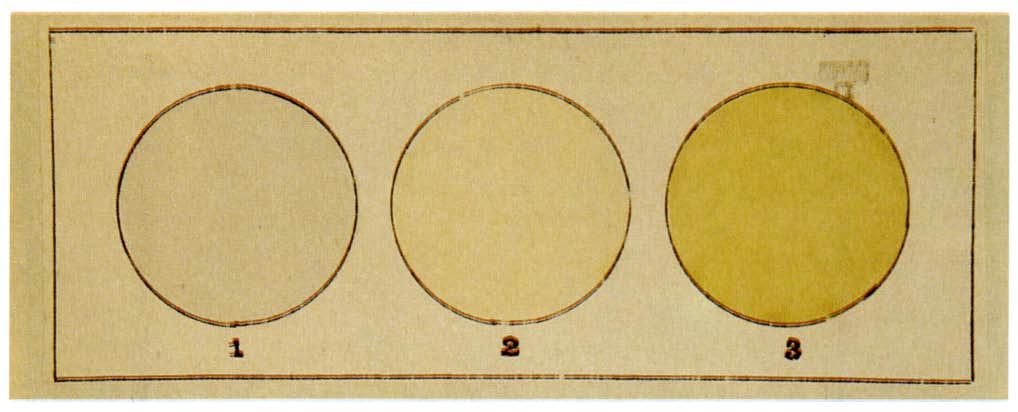|
Electrolysis
In chemistry and manufacturing, electrolysis is a technique that uses direct electric current (DC) to drive an otherwise non-spontaneous chemical reaction. Electrolysis is commercially important as a stage in the separation of elements from naturally occurring sources such as ores using an electrolytic cell. The voltage that is needed for electrolysis to occur is called the decomposition potential. The word "lysis" means to separate or break, so in terms, electrolysis would mean "breakdown via electricity". Etymology The word "electrolysis" was introduced by Michael Faraday in 1834, using the Greek words "amber", which since the 17th century was associated with electrical phenomena, and ' meaning "dissolution". Nevertheless, electrolysis, as a tool to study chemical reactions and obtain pure elements, precedes the coinage of the term and formal description by Faraday. History In the early nineteenth century, William Nicholson and Anthony Carlisle sought to further ... [...More Info...] [...Related Items...] OR: [Wikipedia] [Google] [Baidu] |
Electrolysis Apparatus
In chemistry and manufacturing, electrolysis is a technique that uses Direct current, direct electric current (DC) to drive an otherwise non-spontaneous chemical reaction. Electrolysis is commercially important as a stage in the separation of chemical element, elements from naturally occurring sources such as ores using an electrolytic cell. The voltage that is needed for electrolysis to occur is called the decomposition potential. The word "lysis" means to separate or break, so in terms, electrolysis would mean "breakdown via electricity". Etymology The word "electrolysis" was introduced by Michael Faraday in 1834, using the Greek language, Greek words "amber", which since the 17th century was associated with electrical phenomena, and ' meaning "dissolution". Nevertheless, electrolysis, as a tool to study chemical reactions and obtain pure chemical element, elements, precedes the coinage of the term and formal description by Faraday. History In the early nineteenth century, ... [...More Info...] [...Related Items...] OR: [Wikipedia] [Google] [Baidu] |
Michael Faraday
Michael Faraday (; 22 September 1791 – 25 August 1867) was an English scientist who contributed to the study of electromagnetism and electrochemistry. His main discoveries include the principles underlying electromagnetic induction, diamagnetism and electrolysis. Although Faraday received little formal education, he was one of the most influential scientists in history. It was by his research on the magnetic field around a conductor carrying a direct current that Faraday established the concept of the electromagnetic field in physics. Faraday also established that magnetism could affect rays of light and that there was an underlying relationship between the two phenomena.. the 1911 Encyclopædia Britannica. He similarly discovered the principles of electromagnetic induction, diamagnetism, and the laws of electrolysis. His inventions of electromagnetic rotary devices formed the foundation of electric motor technology, and it was largely due to his efforts t ... [...More Info...] [...Related Items...] OR: [Wikipedia] [Google] [Baidu] |
Voltaic Pile
upright=1.2, Schematic diagram of a copper–zinc voltaic pile. The copper and zinc discs were separated by cardboard or felt spacers soaked in salt water (the electrolyte). Volta's original piles contained an additional zinc disk at the bottom, and an additional copper disk at the top. These were later shown to be unnecessary file:VoltaBattery.JPG, upA voltaic pile on display in the ''Tempio Voltiano'' (the Volta Temple) near Volta's home in Como, Italy The voltaic pile was the first electrical battery that could continuously provide an electric current to a circuit. It was invented by Italian chemist Alessandro Volta, who published his experiments in 1799. The voltaic pile then enabled a rapid series of other discoveries including the electrical decomposition (electrolysis) of water into oxygen and hydrogen by William Nicholson and Anthony Carlisle (1800) and the discovery or isolation of the chemical elements sodium (1807), potassium (1807), calcium (1808), boron (1808), b ... [...More Info...] [...Related Items...] OR: [Wikipedia] [Google] [Baidu] |
Laws Of Electrolysis
Faraday's laws of electrolysis are quantitative relationships based on the electrochemical research published by Michael Faraday in 1833. First law Michael Faraday reported that the mass (m) of elements deposited at an electrode is directly proportional to the charge (Q; SI units are ampere seconds or coulombs). \begin m &\propto Q \\ \implies \frac &= Z \end Here, the constant of proportionality, Z, is called the electro-chemical equivalent (e.c.e) of the substance. Thus, the e.c.e. can be defined as the mass of the substance deposited/liberated per unit charge. Second law Faraday discovered that when the same amount of electric current is passed through different electrolytes/elements connected in series, the mass of the substance liberated/deposited at the electrodes is directly proportional to their chemical equivalent/equivalent weight (E). This turns out to be the molar mass (M) divided by the valence (v) : m \propto E : E = \frac : \implies m_1 : m_2 : m_3 : ... ... [...More Info...] [...Related Items...] OR: [Wikipedia] [Google] [Baidu] |
William Nicholson (chemist)
William Nicholson (13 December 175321 May 1815) was an English writer, translator, publisher, scientist, inventor, patent agent and civil engineer. He launched the first monthly scientific journal in Britain, '' Journal of Natural Philosophy, Chemistry, and the Arts'', in 1797, and remained its editor until 1814. In 1800, he and Anthony Carlisle were the first to achieve electrolysis, the splitting of water into hydrogen and oxygen, using a voltaic pile. Nicholson also wrote extensively on natural philosophy and chemistry Early life Nicholson was educated in Yorkshire, and after leaving school, he made two voyages as a midshipman in the service of the British East India Company. His first voyage was to India and the second voyage was to China on board the ''Gatton,'' (1772-1773). Subsequently, having become acquainted with Josiah Wedgwood in 1775, he moved to Amsterdam, where he made a living for a few years as Wedgwood's agent. On his return to England he was persuaded b ... [...More Info...] [...Related Items...] OR: [Wikipedia] [Google] [Baidu] |
Electrolytic Cell
An electrolytic cell is an electrochemical cell that utilizes an external source of electrical energy to force a chemical reaction that would not otherwise occur. The external energy source is a voltage applied between the cell′s two electrodes; an anode (positively charged electrode) and a cathode (negatively charged electrode), which are immersed in an electrolyte solution. This is in contrast to a galvanic cell, which itself is a source of electrical energy and the foundation of a battery. The net reaction taking place in a galvanic cell is a spontaneous reaction, i.e, the Gibbs free energy remains -ve, while the net reaction taking place in an electrolytic cell is the reverse of this spontaneous reaction, i.e, the Gibbs free energy is +ve.Skoog, Douglas A.; West, Donald M.; Holler, F. James; Crouch, Stanley R. (2014). ''Fundamentals of Analytical Chemistry.'' (9th ed.)''.'' Belmont: Brooks/Cole, Cengage Learning. p. 446-449. Principles In an electrolytic cell, a cur ... [...More Info...] [...Related Items...] OR: [Wikipedia] [Google] [Baidu] |
Humphry Davy
Sir Humphry Davy, 1st Baronet, (17 December 177829 May 1829) was a British chemist and inventor who invented the Davy lamp and a very early form of arc lamp. He is also remembered for isolating, by using electricity, several elements for the first time: potassium and sodium in 1807 and calcium, strontium, barium, magnesium and boron the following year, as well as for discovering the elemental nature of chlorine and iodine. Davy also studied the forces involved in these separations, inventing the new field of electrochemistry. Davy is also credited to have been the first to discover clathrate hydrates in his lab. In 1799 he experimented with nitrous oxide and was astonished at how it made him laugh, so he nicknamed it "laughing gas" and wrote about its potential anaesthetic properties in relieving pain during surgery. Davy was a baronet, President of the Royal Society (PRS), Member of the Royal Irish Academy (MRIA), Fellow of the Geological Society (FGS), and a mem ... [...More Info...] [...Related Items...] OR: [Wikipedia] [Google] [Baidu] |
Anthony Carlisle
Sir Anthony Carlisle FRCS, FRS (15 February 1768 in Stillington, County Durham, England – 2 November 1840 in London) was an English surgeon. Life He was born in Stillington, County Durham, the third son of Thomas Carlisle and his first wife, and the half-brother of Nicholas Carlisle. He was apprenticed to medical practitioners in York and Durham, including his uncle Anthony Hubback and William Green. He later studied in London under John Hunter. In 1793 he was appointed Surgeon at Westminster Hospital in 1793, remaining there for 47 years. He also studied art at the Royal Academy. In 1800, he and William Nicholson discovered electrolysis by passing a voltaic current through water, decomposing it into its constituent elements of hydrogen and oxygen. He was elected a Fellow of the Royal Society in 1804. He was Professor of Anatomy of the Society from 1808 to 1824. In 1815 he became a member of the council of the Royal College of Surgeons, and served as president of the Coll ... [...More Info...] [...Related Items...] OR: [Wikipedia] [Google] [Baidu] |
Paul Héroult
Paul (Louis-Toussaint) Héroult (10 April 1863 – 9 May 1914) was a French scientist. He was the inventor of the aluminium electrolysis and developed the first successful commercial electric arc furnace. He lived in Thury-Harcourt, Normandy. Life and career Paul Héroult read Henri Sainte-Claire Deville's treatise on aluminium, when he was 15 years old. At that time, aluminium was as expensive as silver and was used mostly for luxury items and jewellery. Héroult wanted to make it cheaper. He succeeded in doing so when he discovered the electrolytic aluminium process in 1886. The same year, in the United States, Charles Martin Hall (1863–1914) was discovering the same process. Because of this, the process was called the Hall–Heroult process. Héroult's second most important contribution is the first commercially successful electric arc furnace (EAF) for steel in 1900. The Héroult furnace gradually replaced the giant smelters for the production of a variety of steels ... [...More Info...] [...Related Items...] OR: [Wikipedia] [Google] [Baidu] |
Alessandro Volta
Alessandro Giuseppe Antonio Anastasio Volta (, ; 18 February 1745 – 5 March 1827) was an Italian physicist, chemist and lay Catholic who was a pioneer of electricity and power who is credited as the inventor of the electric battery and the discoverer of methane. He invented the voltaic pile in 1799, and reported the results of his experiments in 1800 in a two-part letter to the president of the Royal Society. With this invention Volta proved that electricity could be generated chemically and debunked the prevalent theory that electricity was generated solely by living beings. Volta's invention sparked a great amount of scientific excitement and led others to conduct similar experiments, which eventually led to the development of the field of electrochemistry. Volta also drew admiration from Napoleon Bonaparte for his invention, and was invited to the Institute of France to demonstrate his invention to the members of the institute. Volta enjoyed a certain amount of closene ... [...More Info...] [...Related Items...] OR: [Wikipedia] [Google] [Baidu] |
Ferdinand Frederick Henri Moissan
Ferdinand Frédéric Henri Moissan (28 September 1852 – 20 February 1907) was a French chemist and pharmacist who won the 1906 Nobel Prize in Chemistry for his work in isolating fluorine from its compounds. Moissan was one of the original members of the International Atomic Weights Committee. Biography Early life and education Moissan was born in Paris on 28 September 1852, the son of a minor officer of the eastern railway company, Francis Ferdinand Moissan, and a seamstress, Joséphine Améraldine (née Mitel). His mother was of Jewish descent, his father was not. In 1864 they moved to Meaux, where he attended the local school. During this time, Moissan became an apprentice clockmaker. However, in 1870, Moissan and his family moved back to Paris due to war against Prussia. Moissan was unable to receive the ''grade universitaire'' necessary to attend university. After spending a year in the army, he enrolled at the Ecole Superieure de Pharmacie de Paris. Scientific career M ... [...More Info...] [...Related Items...] OR: [Wikipedia] [Google] [Baidu] |
William Thomas Brande
William Thomas Brande FRS FRSE (11 January 178811 February 1866) was an English chemist. Biography Brande was born in Arlington Street, London, England, the youngest son of six children to Augustus Everard Brande an apothecary, originally from Hanover in Germany. He was educated first in Kensington and then in Westminster. After leaving Westminster School, he was apprenticed, in 1802, to his brother, an apothecary, with the view of adopting the profession of medicine. He studied medicine at Great Windmill Street Medical School and at St George's Hospital, before being drawn to chemistry following a meeting with Humphry Davy. He then began to lecture in chemistry, based on a sound knowledge of which he acquired in his spare time. In 1811 he published the first of what were to be two very influential articles on the measurement of alcohol in fermented drinks, including wine, cider and ale. Until that point chemists had only been able to measure alcohol in distilled drinks ( ... [...More Info...] [...Related Items...] OR: [Wikipedia] [Google] [Baidu] |







